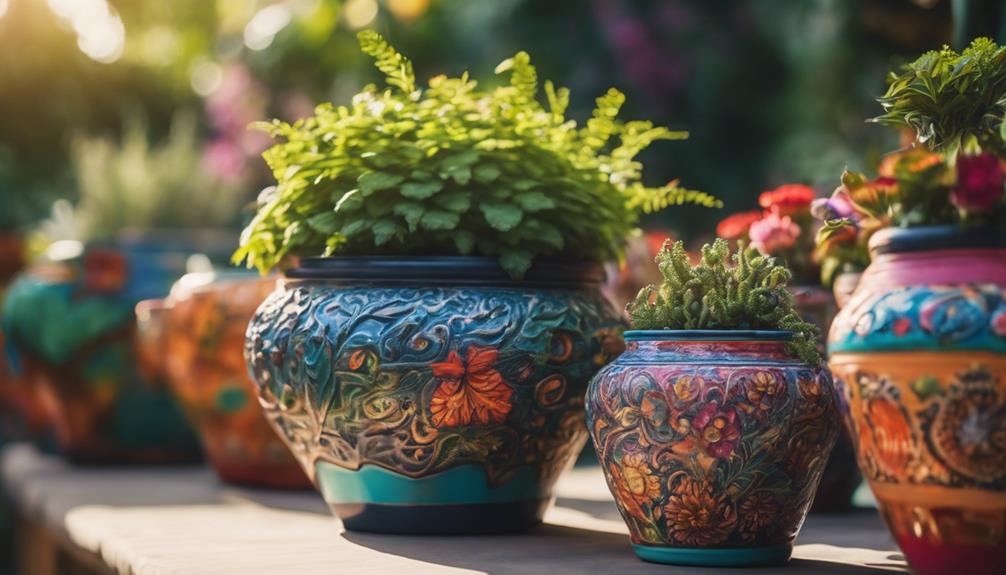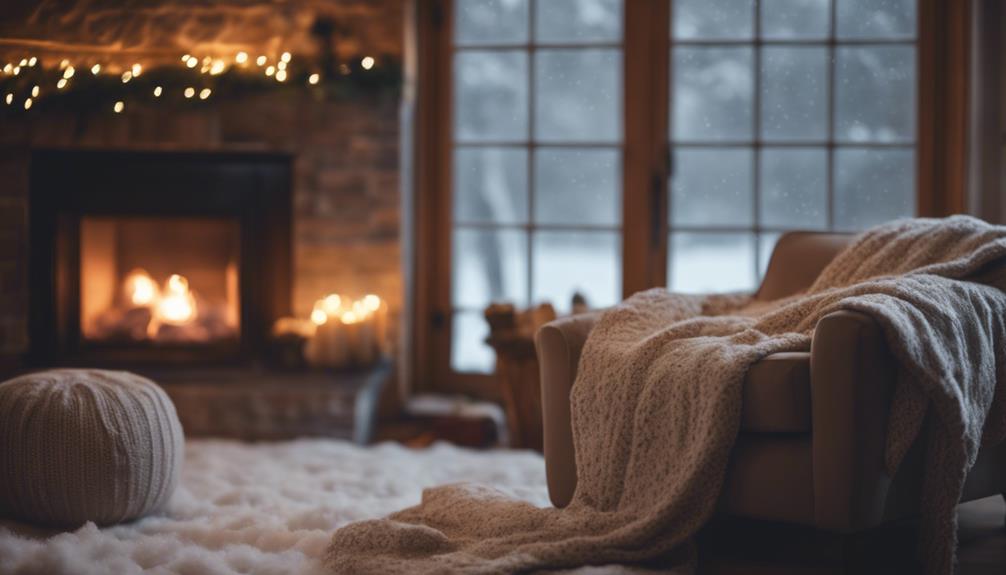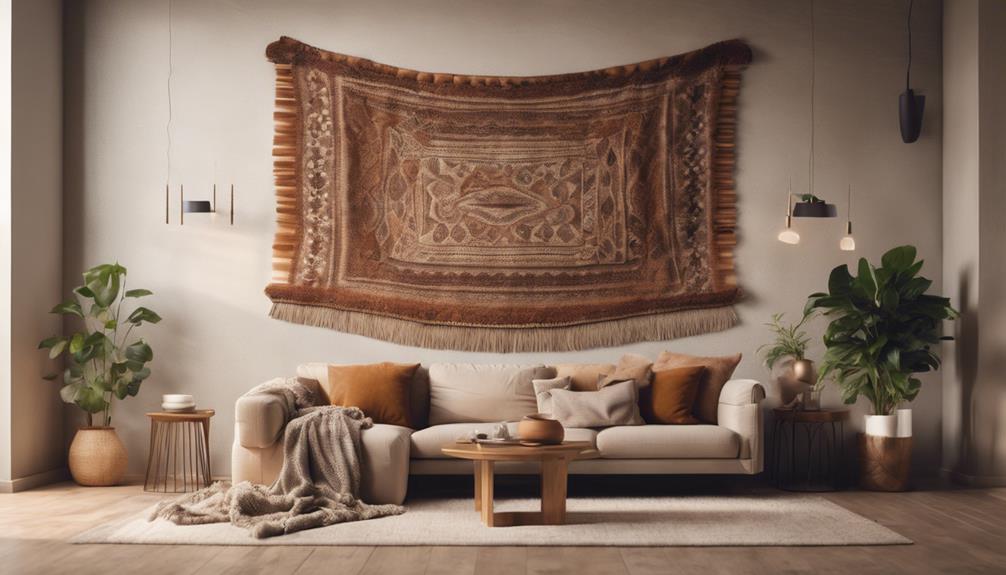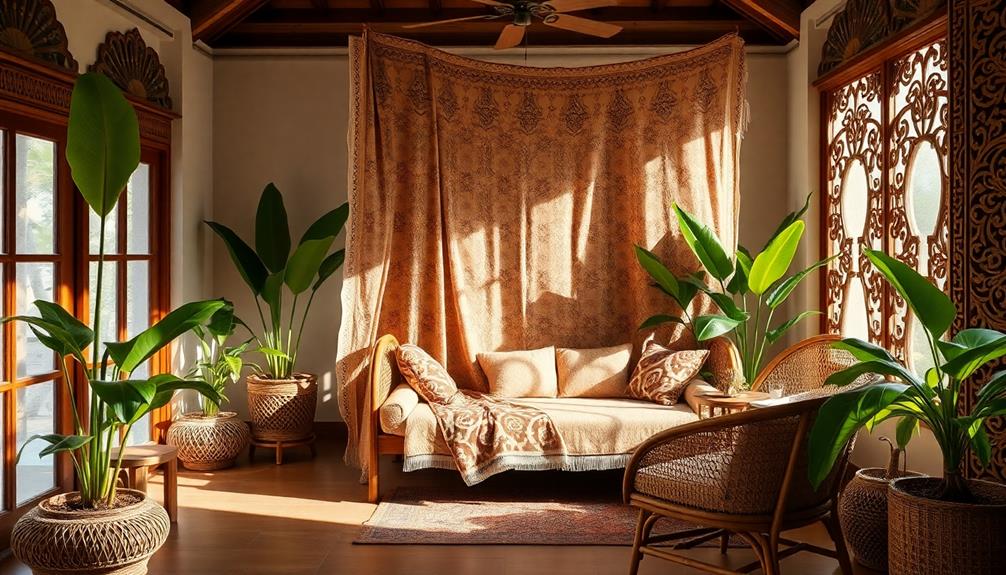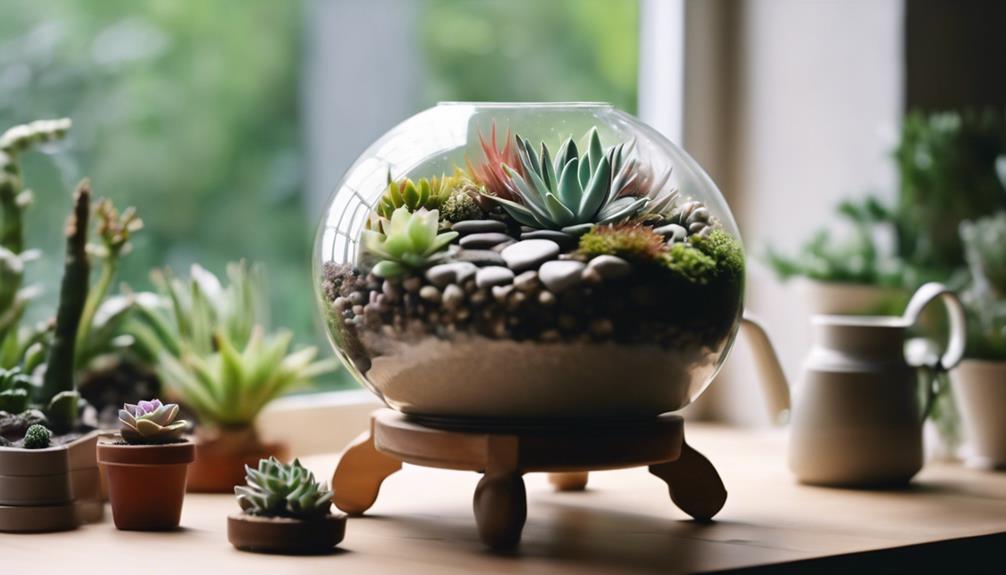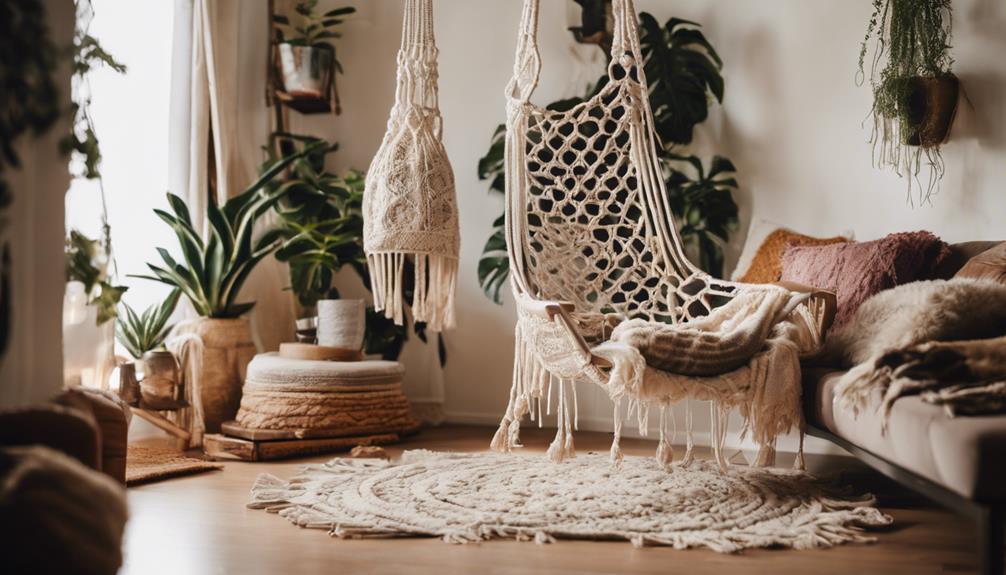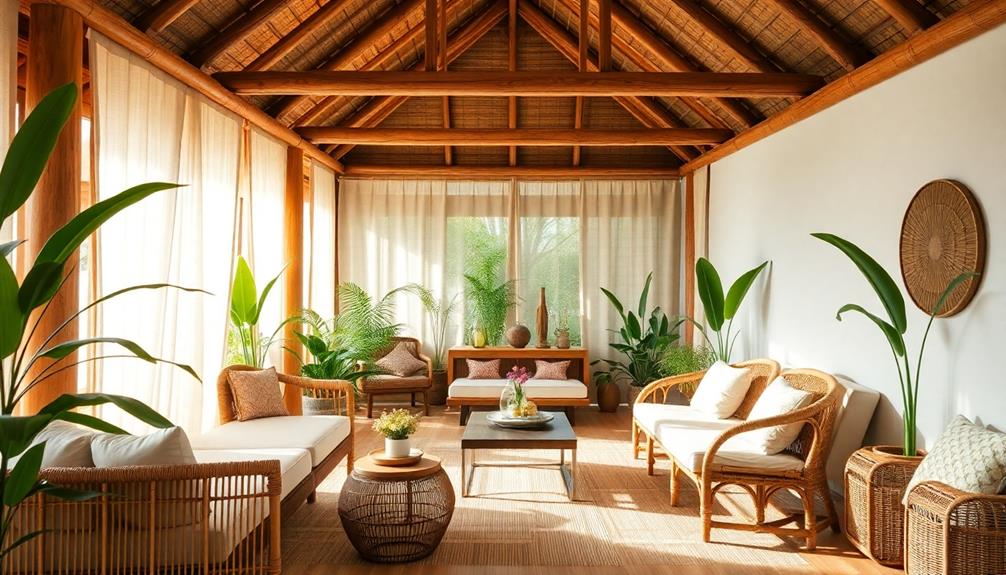If you want to turn your black thumb green, start by choosing the right pots and planters. Look for options with drainage holes to prevent root rot and promote healthy growth. Self-watering planters are also a great choice, as they keep moisture consistent and reduce your watering frequency. Aim for larger containers for better root development and moisture retention. Don't forget about creative planter ideas! By experimenting with unique containers, you can make your space visually appealing, too. Stick around to discover even more tips and tricks that will help you nurture thriving plants effortlessly.
Key Takeaways
- Choose pots with drainage holes to prevent waterlogging and promote healthy root growth, essential for keeping plants thriving.
- Opt for self-watering planters to maintain consistent moisture levels, making care easier for busy individuals or beginners.
- Select lightweight materials for pots to simplify relocation and enhance your indoor or outdoor space's aesthetics.
- Use well-draining soil mixes tailored to specific plants to prevent root rot and ensure optimal nutrient availability.
- Repurpose everyday items as creative planters to add personality to your gardening while fostering a green thumb.
Choosing the Right Pots
When choosing the right pots for your plants, it's crucial to take into account factors like drainage, material, and size to guarantee their health and growth.
First, always opt for pots with drainage holes. This feature prevents waterlogging and root rot, common issues for novice gardeners.
Next, consider the material. Lightweight options like resin or fiberglass make it easy to relocate your container garden, especially for indoor plants that need optimal light exposure.
Size matters too. Larger pots retain moisture better and provide ample space for root growth, making them ideal for more substantial plants.
If you're looking for a blend of aesthetics and practicality, select decorative pots that complement your home or garden style. They can enhance your space while serving a functional purpose.
Lastly, think about self-watering pots. These innovative containers have a reservoir that gradually supplies moisture, reducing the frequency of manual watering.
Importance of Drainage
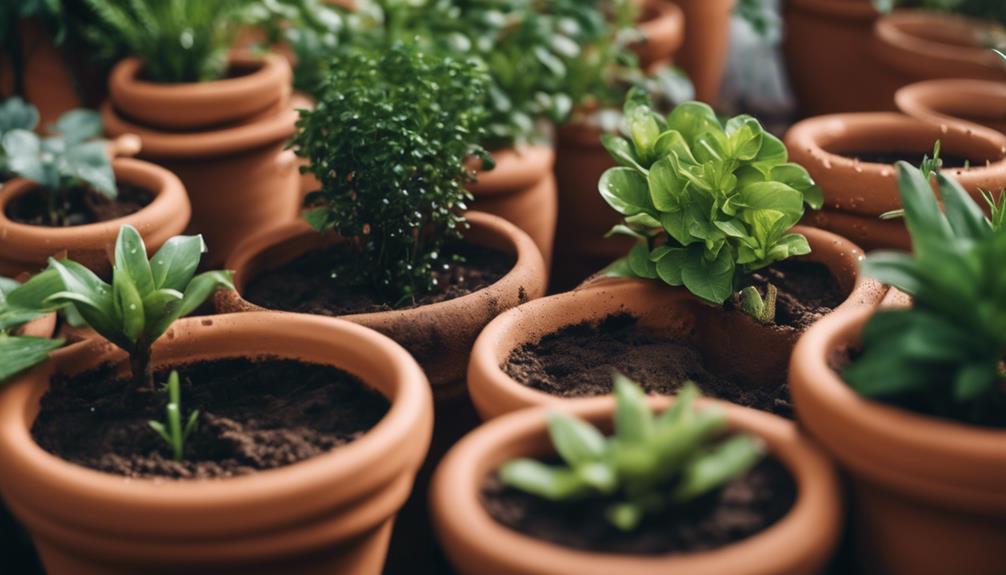
When you're choosing pots, don't overlook the importance of drainage holes.
They play a crucial role in balancing soil moisture and preserving root health, preventing issues like root rot.
Drainage Hole Necessity
The necessity of drainage holes in pots can't be overstated, as they protect your plants from the dangers of overwatering and root rot. When you water your plants, excess moisture needs a way to escape; otherwise, the soil can become waterlogged. This condition suffocates the roots, preventing them from getting the oxygen they need to thrive. Without proper drainage, your plants can experience stunted growth or even die.
Most houseplants thrive in well-draining soil, and pots with drainage holes are essential for maintaining the right moisture levels. They help you avoid overwatering by allowing you to gauge how much water your plants are actually retaining. A good tip is to check the weight of your pots before watering; if they feel heavy, you likely don't need to add more water.
Choosing pots with drainage holes is a straightforward yet critical step towards successful plant care. By doing so, you greatly reduce the likelihood of common watering-related issues, giving your plants the best chance to flourish. So, make sure to prioritize drainage holes in your pot selection!
Soil Moisture Balance
Maintaining a proper soil moisture balance is key to keeping your plants healthy and thriving, as it prevents issues like root rot caused by excess water accumulation. Good drainage plays an essential role in this balance.
Make sure your pots have drainage holes at the bottom to allow excess water to escape. This way, the soil can dry out properly between waterings, preventing waterlogged conditions that can suffocate your plants' roots.
Using well-draining soil mixes, which often include perlite or sand, can greatly enhance drainage. This is especially important for plants that prefer drier conditions.
Regularly checking the moisture level in your pots is critical. You can do this by inserting a finger into the soil or using a moisture meter. This helps you gauge when to water, ensuring you don't overdo it.
If you're often busy or forgetful, consider utilizing self-watering pots. They provide a consistent supply of moisture while still allowing for adequate drainage, making it easier to maintain a healthy soil environment.
Ultimately, mastering soil moisture balance will lead to flourishing plants and a thriving indoor garden.
Root Health Preservation
Proper drainage is essential for preserving root health, as it prevents waterlogging that can cause root rot in your plants. When pots lack proper drainage, excess water can accumulate, suffocating roots and leading to decay. To guarantee your plants thrive, choose pots with drainage holes that allow excess water to escape.
Additionally, using well-aerated potting soil enhances drainage, promoting healthy root development by allowing roots to access the oxygen they need. Regularly monitoring the weight of your pots can also give you insight into moisture levels; a heavy pot often signals enough water, while a lighter one may mean it's time to water.
You might also consider placing a layer of gravel or rocks at the bottom of your pots. This simple trick can considerably improve drainage and help maintain ideal root health.
Self-Watering Planters
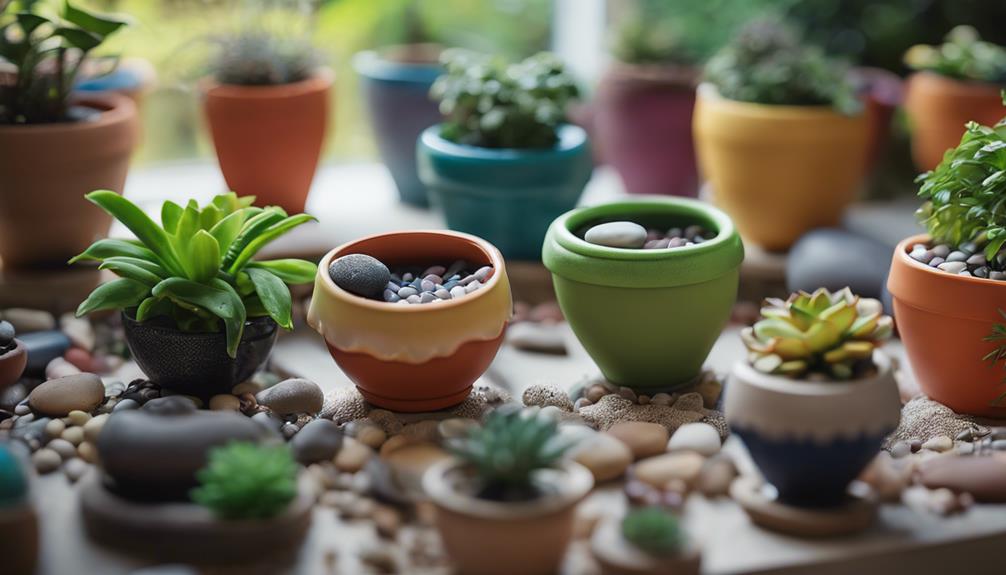
Self-watering planters offer a convenient way to keep your plants hydrated without the constant worry of over- or under-watering.
You'll find various types available, each designed to meet different gardening needs and preferences.
Plus, with simple maintenance and care, these planters can help you grow healthier plants with less effort.
Benefits of Self-Watering
One major advantage of self-watering planters is their ability to provide consistent moisture levels, which promotes healthier root growth and reduces the risk of overwatering. These planters utilize a reservoir system that allows plants to absorb moisture as needed, making them perfect for busy gardeners or those just starting out. By maintaining ideal soil moisture, self-watering planters help prevent root rot and other water-related issues.
Here's a quick comparison of benefits:
| Benefit | Description |
|---|---|
| Consistent Moisture | Guarantees plants receive the right amount of water |
| Reduced Overwatering Risk | Lowers chances of root rot and other issues |
| Easy Monitoring | Many have water level indicators for convenience |
With these features, self-watering planters can support robust plant growth and vibrant flowering, resulting in lush greenery over time. You'll find that they simplify your gardening experience, making it easier to keep your plants thriving with minimal effort. So, if you want to turn your black thumb green, investing in self-watering planters might just be the perfect solution for you!
Types of Planters
When exploring the variety of planters available, self-watering designs stand out for their innovative reservoir systems that maintain consistent moisture levels, making gardening easier for everyone.
These self-watering planters are perfect for indoor plants, especially if you tend to forget about watering. With a built-in reservoir, your plants can absorb water as needed, reducing the risk of overwatering or underwatering.
Many of these planters come equipped with a helpful water level indicator, so you can easily monitor moisture levels without frequent checks. You'll love the convenience of knowing exactly when your plants need a drink. Plus, they often utilize a wicking system, which draws water from the reservoir to the soil, ensuring your plants remain consistently hydrated.
One of the best features of self-watering planters is that they can cut down your watering frequency to just once every few weeks. This makes them an excellent choice for busy individuals or those new to gardening.
With various sizes and designs available, self-watering planters can fit seamlessly into any indoor or outdoor gardening setup, giving you the flexibility to create a thriving green space.
Maintenance and Care
Maintaining your self-watering planters is straightforward, ensuring your plants thrive with minimal effort on your part. These planters feature a reservoir system that allows plants to absorb water as needed, promoting consistent moisture levels. Here's how to keep your plants happy:
| Task | Frequency |
|---|---|
| Check water levels | Weekly |
| Clean the reservoir | Monthly |
| Inspect wicking system | As needed |
Most self-watering planters come with clear indicators to show water levels, making it easy to know when to refill. If you're busy or new to gardening, these planters are a lifesaver. Some even have built-in sensors that notify you through mobile apps about soil moisture levels, further simplifying care.
To keep your plants healthy, just monitor the water levels and clean the reservoir regularly. With this simple maintenance routine, you'll minimize the risk of over- or under-watering. Enjoy the convenience of self-watering planters, and watch your gardening skills flourish!
Ideal Plant Placement
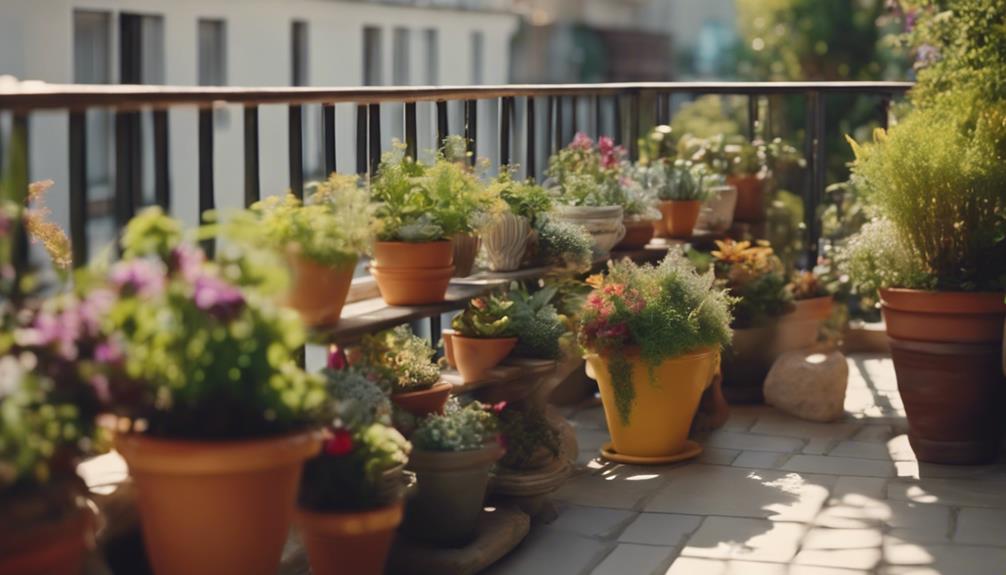
Choosing the right spot for your plants is vital to their health and growth. Understanding ideal plant placement starts with knowing each plant's light requirements. Sun-loving plants thrive best in south-facing windows, soaking up that direct sunlight, while shade-tolerant varieties prefer lower light areas, where they can flourish without being scorched.
Proper spacing between plants is also important. When you overcrowd them, they compete for nutrients and water, which can stunt their growth. Consider your local climate zone, too; choosing plants suited to your area will increase your chances of success and save you from frustrating failures.
Pay attention to soil moisture levels as well. If you have moisture-loving plants, position them in consistently humid areas to enhance their growth.
Creative Container Ideas

Get inspired by creative container ideas that transform everyday items into unique planters, adding character and charm to your garden. You don't have to stick to traditional pots; repurpose old teacups, tin cans, or wooden crates to create creative planters that showcase your personality. These reused containers not only reduce waste but also bring a whimsical touch to your space.
Consider using hanging baskets or wall-mounted pots to save space and add vertical interest, especially if you're working with a small patio or balcony. Themed planter arrangements can enhance visual appeal, so try grouping plants with similar colors or textures together for a striking focal point.
Don't shy away from exploring unique materials for your planters. Concrete, ceramic, and even biodegradable options like coconut coir can provide diverse aesthetics and benefits for plant health. By incorporating these creative planters into your garden, you'll not only beautify the area but also foster a deeper connection with nature.
Managing Watering Needs
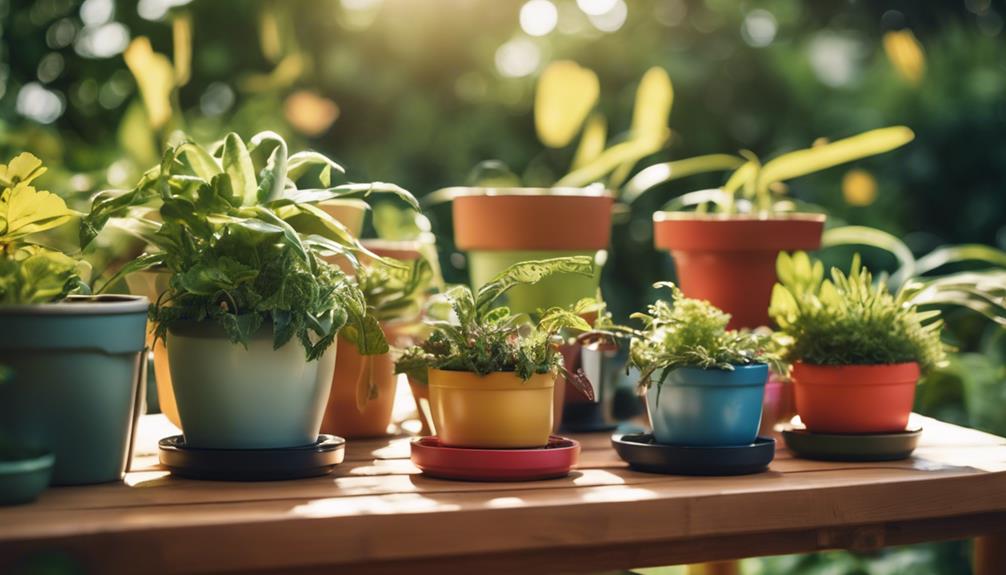
Understanding your plants' watering needs is vital for their health and vigor. One of the most common pitfalls in gardening is overwatering, which can lead to root rot. To prevent this, always allow the soil to dry completely before watering again. A simple way to check moisture levels is by inserting a finger or toothpick into the soil. If it comes out dry, it's time to water.
Using pots with drainage holes is important in managing watering needs, as these holes help excess water escape, preventing accumulation that can suffocate roots and encourage fungal issues. Instead of daily light watering, try implementing a deep soaking technique. Water your plants thoroughly and then let the soil dry out between sessions for better results.
Keep in mind that indoor plants typically need watering once a week, but this can vary based on plant type, season, and light exposure. Regularly monitor soil moisture to fine-tune your approach.
Be aware of signs of overwatering, like wilting or browning leaves, and adjust your habits accordingly to make sure your plants thrive.
Enhancing Plant Growth
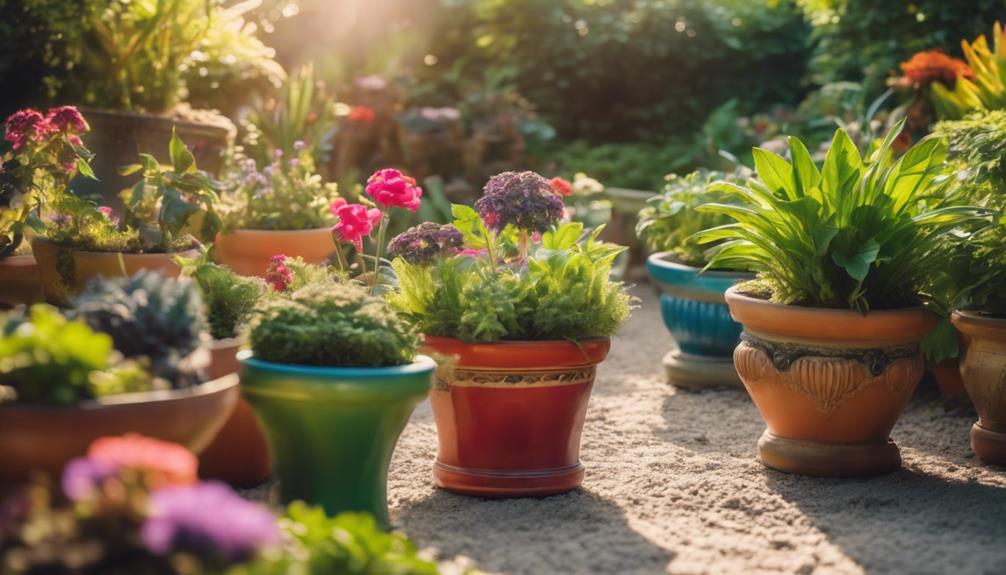
Enhancing plant growth involves selecting the right pots and soil, as well as providing the appropriate nutrients and moisture levels for your specific plants. Utilizing self-watering pots can greatly help maintain consistent moisture levels, reducing the risk of overwatering and promoting healthier root growth. Make sure your pots have drainage holes to prevent waterlogging, which can lead to root rot.
Here's a quick reference table to guide you in choosing the best potting options:
| Pot Type | Benefits | Ideal Plants |
|---|---|---|
| Self-Watering Pots | Maintains moisture, reduces overwatering | Herbs, houseplants |
| Terracotta Pots | Regulates moisture and temperature | Succulents, cacti |
| Plastic Pots | Lightweight and retains moisture | Annual flowers, veggies |
| Pots with Drainage | Prevents waterlogging | Most indoor/outdoor plants |
Selecting the right soil mix tailored to your plants' needs enhances nutrient availability. Additionally, incorporating organic fertilizers into your routine supports growth and improves overall health. Remember, matching your pots to your plants' natural environments is key to creating ideal growth conditions.
Conclusion
So, if you think you can just toss a plant in a pretty pot and call it a day, think again!
Without drainage, self-watering, and a bit of creativity, your green ambitions might just end up as a sad, wilted mess.
Remember, even plants need a little TLC—unless you're aiming for a new career in plant exorcism.
Embrace your inner gardener, and soon you'll be the proud owner of a thriving jungle instead of a graveyard of neglected pots!
